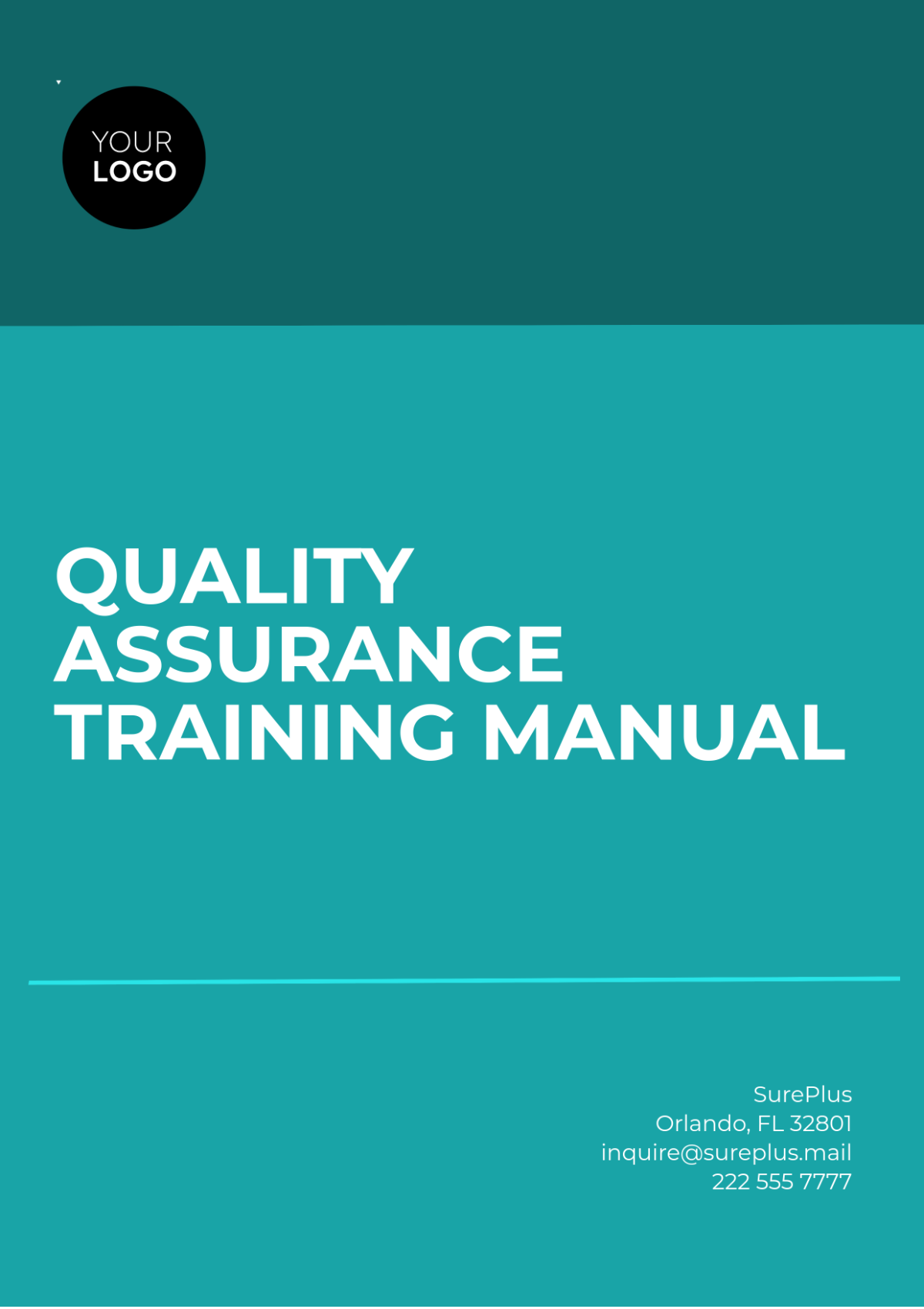Quality Assurance Training Manual
Prepared by: [Your Company Name]
Date: [Date]
I. Introduction
Welcome to the Quality Assurance Training Manual of [Your Company Name]. This manual serves as a comprehensive guide to understanding our quality assurance (QA) processes and practices. Quality assurance is vital in our commitment to delivering exceptional products and services. This manual is designed to equip employees with the necessary knowledge and skills to uphold our quality standards.
I.I Purpose
The primary purpose of this manual is to ensure all employees are informed about our quality assurance policies, procedures, and techniques. By adhering to these guidelines, we aim to foster a culture of continuous improvement, enhance customer satisfaction, and maintain compliance with industry regulations.
I.II Scope
This manual applies to all employees involved in the production, inspection, and delivery of products and services at [Your Company Name]. It covers all aspects of our quality assurance processes and outlines responsibilities for quality management across departments.
II. Quality Assurance Objectives
The Quality Assurance program at [Your Company Name] is driven by several key objectives, which are essential to our operational success:
Ensuring Product Quality: We are dedicated to delivering high-quality products that meet or exceed customer expectations. This includes rigorous testing and validation processes at every production stage.
Continuous Improvement: We strive to foster a culture of continuous improvement by regularly reviewing and enhancing our processes, identifying inefficiencies, and implementing corrective actions.
Employee Engagement: We believe in empowering our employees through training and active participation in quality initiatives. Employees are encouraged to contribute ideas for improving quality.
Customer Satisfaction: We prioritize customer satisfaction by seeking and addressing feedback, ensuring that our products and services align with market needs and expectations.
Regulatory Compliance: We are committed to meeting all applicable regulatory and industry standards, ensuring that our processes and products are compliant with relevant guidelines.
III. Policies and Procedures
III.I Quality Assurance Policies
Commitment to Quality:
[Your Company Name] is dedicated to maintaining the highest quality standards across all operations. Our management team is responsible for providing the resources and support necessary for achieving quality objectives.
Employee Training:
All employees are required to undergo initial and ongoing training on quality assurance practices relevant to their specific roles. Training sessions will cover key topics such as quality control techniques, regulatory compliance, and documentation standards.
Non-Conformance Management
A structured process will be followed for identifying and managing non-conformities. This includes:
Reporting any quality issues immediately.
Conducting investigations to determine root causes.
Implementing corrective actions and preventive measures to avoid recurrence.
III.II Procedures
Quality Audits
Regular internal audits will be conducted to assess compliance with quality standards. Audits will be scheduled quarterly, and findings will be documented for review and action.
Corrective Actions
Detailed procedures for addressing quality issues will include:
Root Cause Analysis: Investigating the underlying causes of quality issues to prevent recurrence.
Corrective Action Plans (CAPs): Developing and implementing plans to address identified issues, including timelines and responsible parties.
Follow-Up Audits: Conducting follow-up audits to ensure corrective actions are effective and sustained.
IV. Documentation Requirements
Accurate documentation is critical to the success of our Quality Assurance program. Employees must ensure that:
IV.I Quality Records
All quality-related activities must be documented accurately, including:
Inspection reports
Testing results
Audit findings
Corrective actions taken
IV.II Forms and Templates
Standardized forms and templates must be used for consistent documentation of quality processes. Examples include:
IV.III Data Management
All data related to quality assurance must be stored securely and be easily accessible for review and analysis. A centralized database will be maintained for tracking quality metrics and trends.
V. Quality Control Techniques
To ensure product quality, [Your Company Name] employs various quality control techniques, including:
V.I Statistical Process Control (SPC)
SPC involves monitoring and controlling production processes using statistical methods. Key components include:
V.II Inspections
Regular inspections will be conducted at various production stages to ensure adherence to quality standards. This includes:
Incoming Material Inspection: Verifying the quality of raw materials before production.
In-Process Inspection: Monitoring production processes to detect issues early.
Final Product Inspection: Conducting thorough inspections before products are released to customers.
V.III Testing Procedures
Standardized testing methods will be implemented to verify the quality and performance of products. Examples of tests include:
VI. Compliance and Regulations
Compliance with applicable regulations and industry standards is essential for maintaining our Quality Assurance program. Employees are required to:
VI.I Understand Regulatory Requirements
Familiarize themselves with relevant laws and regulations affecting our industry, including:
ISO 9001: Quality management systems
FDA regulations (for applicable industries)
Environmental regulations
VI.II Participate in Compliance Training
Attend regular training sessions on compliance topics to stay updated on changes and best practices. Training sessions will be scheduled bi-annually, and attendance will be mandatory.
VI.III Report Compliance Issues
Employees must immediately report any compliance-related issues to their supervisor or the quality assurance department for prompt resolution. A confidential reporting mechanism will be in place to encourage transparency.
VII. Appendices
Appendix A: Glossary of Terms: Definitions of key quality assurance terms to enhance understanding.
Appendix B: Quality Assurance Training Schedule: A schedule of upcoming training sessions, including dates, topics, and facilitators.
Appendix C: Sample Quality Audit Checklist: A template for conducting internal audits, including key areas to assess.
Appendix D: Contact Information for Quality Assurance Personnel: A list of key QA personnel, including names, titles, and contact details for inquiries and support.
Appendix E: Additional Resources and References: Links to industry standards, guidelines, and best practices related to quality assurance.
Manual Templates @ Template.net






























